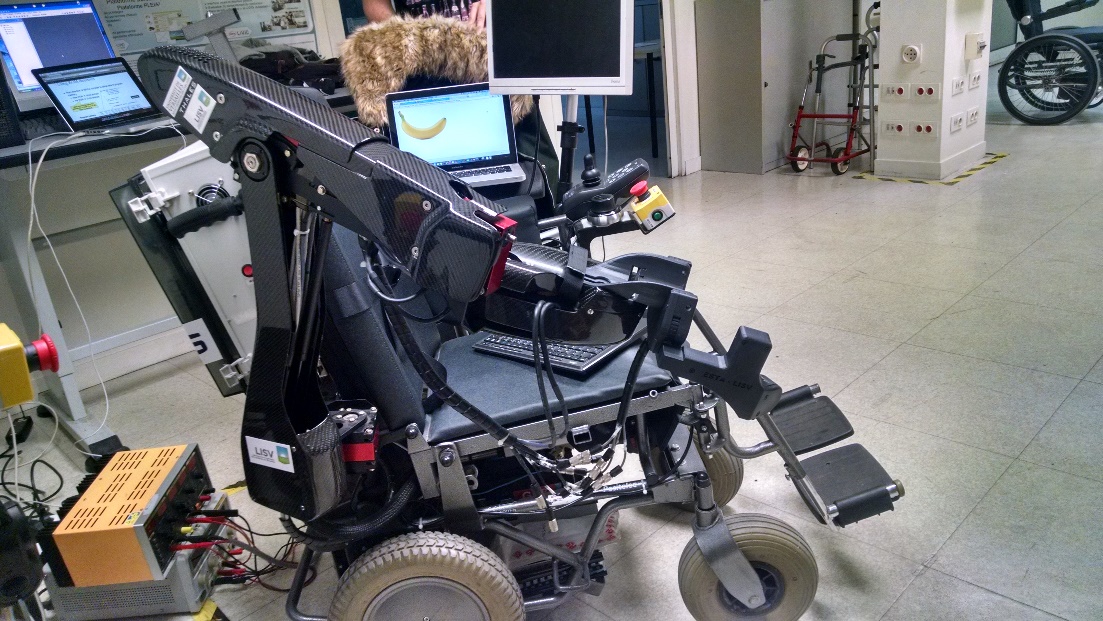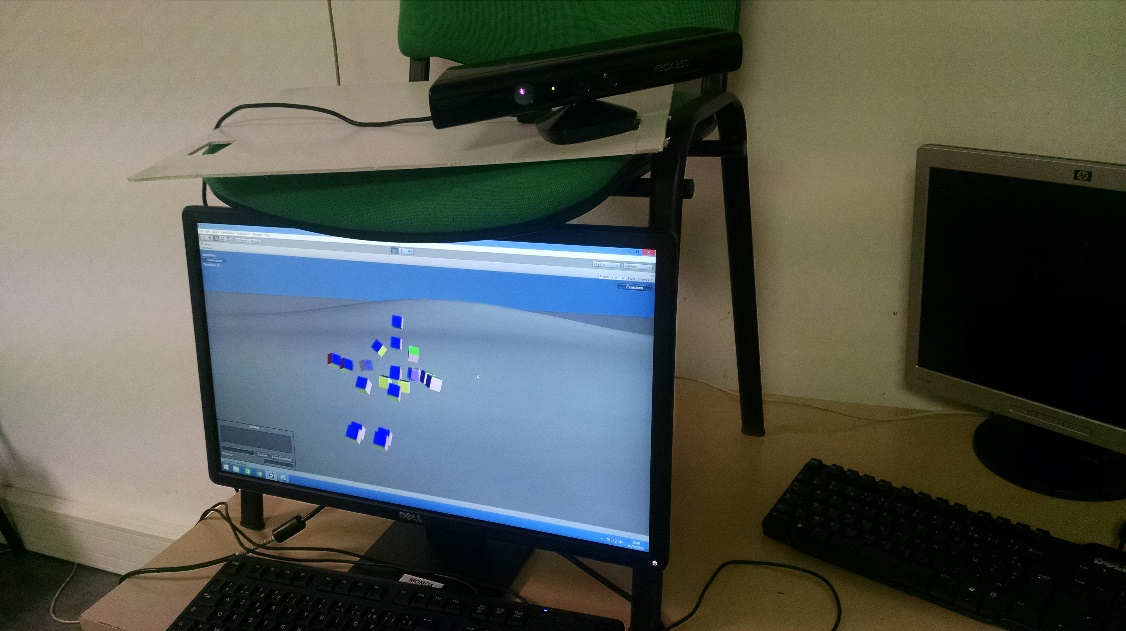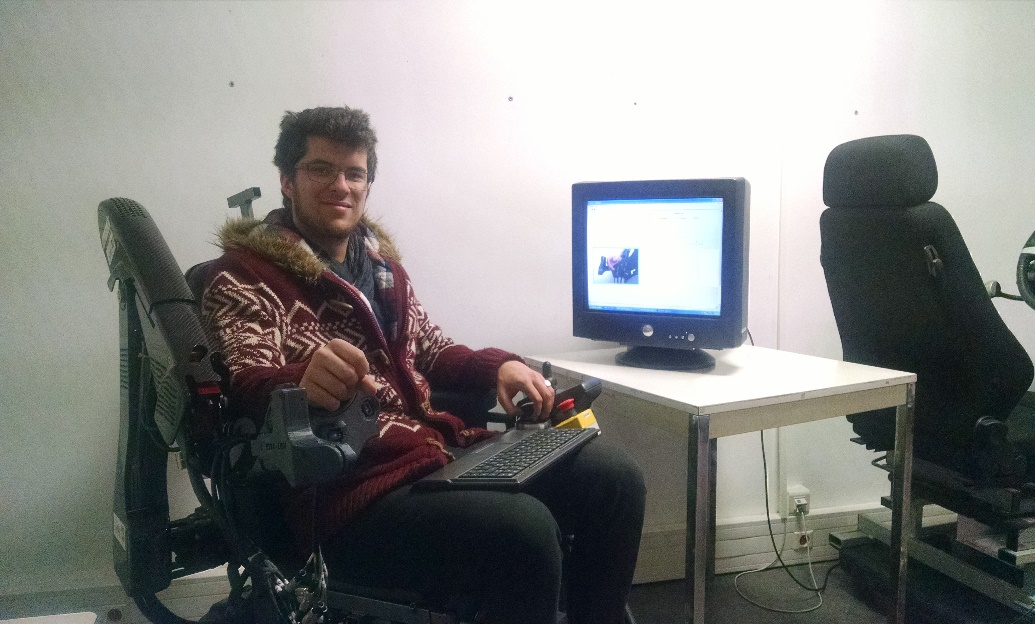- Partager cette page :
- Version PDF
Projet11 - Master2 CSER 2015
Research project: ESTA Robotic Orthosis with Ambient assistance
(LISV, Versailles Engineering Systems Laboratory)
Recover mobility of the upper limbs
Some people suffer from myopathy, a deficiency causing an inability to use the strong muscles of the arm. Thus, only the weaker muscles are permitted to move, permitting short moves of the wrist and the fingers. In this context, a robotic exoskeleton orthosis has been developed. The robotic arm in itself, named ESTA arm, was created by Thales enterprise, and it was afterward powered and put on move by several researchers and PhD students working at the laboratory. The purpose is to compensate the loss of ability of the human arm for joints of the elbow and the elbow. This project is conducted with the participation of five partners: the A.F.M. (French Association against Myopathies), AP-HP (Public Assistance – Paris Hospitals), TechInnovation (Premier industry-to-technology matching event), CEA (French research centers working in many fields) and Thales (Multinational corporation in electronics field).

Fig. 1 : Exo Skeleton ESTA
This orthosis includes four degrees of liberty. As you can see above, the ESTA arm has been mounted on a wheelchair and connected to a computer. There is a non-contact Human-Machine Interface at the end of the arm, which is a possible solution to the problematic of controlling the upper limbs for people suffering from myopathy. This interface is a pack of six infrared sensors, set around the hand. The signals from these sensors is sent to the computer, and computed using fuzzy logic – a method of interpretation which is trying to guess what the user was thinking about – to move the ESTA arm into a direction.
Using the work that has already been done, we are currently developing a visual recognition of the ESTA arm with a Kinect device in order to have an automatic identification of the geometrical model of the arm. This task was the first step toward an orthosis learning protocol, involving a visual guided solution, enabling the display of a theorical trajectory of the ESTA arm, compared to the realised trajectory, while the arm is moving. This would also allow an analysis of the error and of the accuracy of the geometric model of the ESTA arm.
Using the work that has already been done, we are currently developing a visual recognition of the ESTA arm with a Kinect device in order to have an automatic identification of the geometrical model of the arm. This task was the first step toward an orthosis learning protocol, involving a visual guided solution, enabling the display of a theorical trajectory of the ESTA arm, compared to the realised trajectory, while the arm is moving. This would also allow an analysis of the error and of the accuracy of the geometric model of the ESTA arm.


Fig. 2 : Visual Recognition assistance and ESTA







